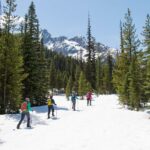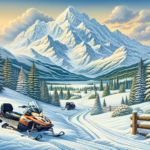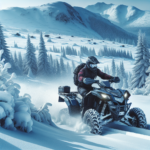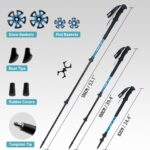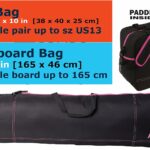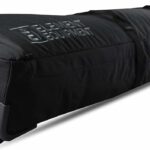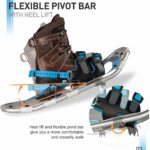As winter creeps in and dusts our beloved hiking trails with snow, you might be wondering if it’s worth investing in snowshoes for your winter hiking adventures. This article explores the role of snowshoes in winter hiking, considering factors like the depth of snow, the type of trail, and your personal comfort. By the end of this piece, you’ll have a clearer idea whether you need to add snowshoes to your winter hiking gear or if your regular boots will suffice.
Understanding Snowshoes
Winter opens up a brand new world of outdoor adventure, but traversing snowy landscapes requires special equipment. One fascinating tool that’s often used is the snowshoe.
What are snowshoes?
In case you’ve never come across them before, snowshoes are footgear designed to help you move across snow-covered ground without sinking. They’re essentially a platform that distributes your weight over a larger surface area, a little bit like an inflatable raft does in water.
How do snowshoes work?
Snowshoes work on a simple principle called flotation. It’s all about spreading your weight over a wider area to prevent your feet from sinking into the snow. The larger surface area underneath helps support your weight and keeps you on top of the snow rather than digging into it.
Conditions That Require Snowshoes
Walking in a winter wonderland might sound like a dream, but it can actually be quite challenging if you’re not properly equipped. There are specific conditions where snowshoes are ideal.
Deep snow
Snowshoes shine in deep snow. When the snow is powdery and deep, normal boots sink easily, making walking exhausting and slow. The snowshoe’s broad surface area provides the necessary flotation to keep you on the surface and moving.
Icy or slippery terrain
Snowshoes can also help you maintain your balance on icy or slippery terrain, thanks to their strong grip and sturdy spikes usually located on the bottom of the shoe. They provide a stability that normal footwear can’t compete with on icy terrain.
Trudging through the backcountry
When you’re trudging through backcountry trails that aren’t well-traversed, snowshoes can be your best friend. They allow you to navigate through the deep, unbroken snow with relative ease.
Types of Snowshoes for Hiking
Just like hiking boots, snowshoes are not one-size-fits-all. There are different types designed for various terrains.
Flat terrain snowshoes
Flat terrain snowshoes are perfect for beginners, or for those who plan on walking on gentle terrains. They’re often more comfortable, user-friendly, and are designed with convenient features like easy-to-adjust bindings.
Rolling terrain snowshoes
As the name suggests, rolling terrain snowshoes are meant for use on rolling, or uneven, terrain. They’re often more rugged than flat terrain snowshoes, with features for better traction and more robust bindings.
Mountain terrain snowshoes
These snowshoes are for the serious winter adventurer. Designed for steep and icy terrain, mountain terrain snowshoes have aggressive crampons for excellent traction and durable bindings.
Snowshoe Size Selection
Proper size selection is vital for optimal performance from your snowshoes.
Importance of correct snowshoe size
The size of your snowshoes affects flotation. Larger snowshoes offer more flotation, which is beneficial in deep, powdery snow. However, large snowshoes can be cumbersome and difficult to maneuver in tight or heavily wooded areas.
Determining the right size
Your weight, along with the weight of any pack you carry, is the main factor to consider when selecting snowshoe size. Also consider where you’ll be snowshoeing: smaller snowshoes are great for trails and firm snow, while larger ones are ideal for off-trail and deep snow conditions.
Proper Use of Snowshoes
Once you’ve found the right snowshoes, you need to know how to use them properly to get the most out of your winter hiking adventure.
How to wear snowshoes
Snowshoes should be attached to your hiking boots using the bindings, ensuring they’re snug but not overly tight. Each foot should rest comfortably on the decking of the shoe, with the ball of your foot situated over the crampon for proper traction.
Walking technique with snowshoes
Walking in snowshoes isn’t overly complicated but does take a little practice. Start by lifting your feet higher than you would normally. This helps to prevent tripping over the front of your snowshoes. When walking uphill, dig in with the front of your shoe, and when going downhill, lean back slightly to help control your speed.
Safety measures when using snowshoes
Always be mindful of where you step, making sure not to place your snowshoes too close together to avoid tripping. Also, be sure to check your bindings frequently to ensure they are tight and secure.
Alternatives to Snowshoes
While snowshoes are a great tool for winter hiking, they are not the only option.
Microspikes
Microspikes are small, metal spikes that attach to your boots. They provide excellent traction on icy surfaces but don’t assist with flotation in deep snow.
Ice grips for boots
Ice grips, like microspikes, attach to your boots, and can help improve traction on icy surfaces, but they also provide no flotation.
Crampons
Crampons are similar to microspikes but are more aggressive and designed for glacier travel or steep, icy terrain. Like the previous two, they don’t offer help with flotation.
Comparing Snowshoes with Alternatives
Each tool has its pros and cons, and the right choice relies heavily on the specific conditions you’ll be facing.
Efficiency comparison
Snowshoes are more efficient than both microspikes and crampons in deep snow due to their flotation properties, but in hard or icy snow where flotation isn’t necessary, microspikes or crampons may be more efficient due to their lighter weight.
Safety comparison
Safety depends largely on conditions. In deep snow, snowshoes prevent the fatigue that can lead to accidents. But on icy terrain, the better traction offered by microspikes or crampons can make a big difference in safety.
Price comparison
Snowshoes can be more expensive, but remember, you’re not only paying for material and construction, but also for flotation, which can be a game-changer in deep snow.
Additional Gear for Winter Hiking
Additional gear can keep you warm and safe during your winter hikes.
Insulated clothing
Dressing in layers of insulated clothing helps to trap body heat and fend off the cold. Don’t forget to choose moisture-wicking materials for your base layer to keep sweat from cooling against your skin.
Thermal socks
Cold feet can quickly ruin a hike, so make sure you have a good pair of thermal socks to keep those toes warm.
Gloves and Hats
Exposed skin is especially vulnerable to freezing temperatures. Gloves and hats are crucial for maintaining body heat and preventing frostbite.
Winter Hiking Safety Tips
Staying safe while winter hiking goes beyond gear. There are also important practices to follow before and during your venture.
Check the weather forecast
Always check the forecast before going for a winter hike. Conditions can change quickly, and it’s crucial to know what’s coming.
Tell someone about your plan
Never go on a hike without letting someone know where you’re going and when you expect to return. In case anything goes wrong, this information could be crucial.
Pack survival gear
Be prepared for unexpected emergencies by packing survival gear such as a first aid kit, a whistle, a space blanket, a headlamp, and food and water.
The Effects of Climate Change on Winter Hiking
The changing climate is affecting all types of outdoor recreation, including winter hiking.
Warmer winter temperatures
Warmer temperatures mean less snow and potentially more challenging or even dangerous conditions such as thin ice.
Unpredictable weather patterns
More variability in weather patterns can make planning a winter hike more difficult and can increase the risk of encountering unexpected conditions.
Impacts on snowshoeing practices
Warmer winters and changing snow conditions may impact where, when, and how snowshoes are used. It’s more important than ever to be flexible and adapt your practices as needed.
In conclusion, winter hiking presents unique challenges, but with the right tools–such as snowshoes–and precautions, it can offer a breathtaking new perspective on your favorite trails. Stay safe and happy trails!
- What Snowboard Bindings Should I Get? - January 23, 2024
- What Size Screws For Snowboard Bindings? - January 23, 2024
- How To Snowmobile On Water? - January 23, 2024


